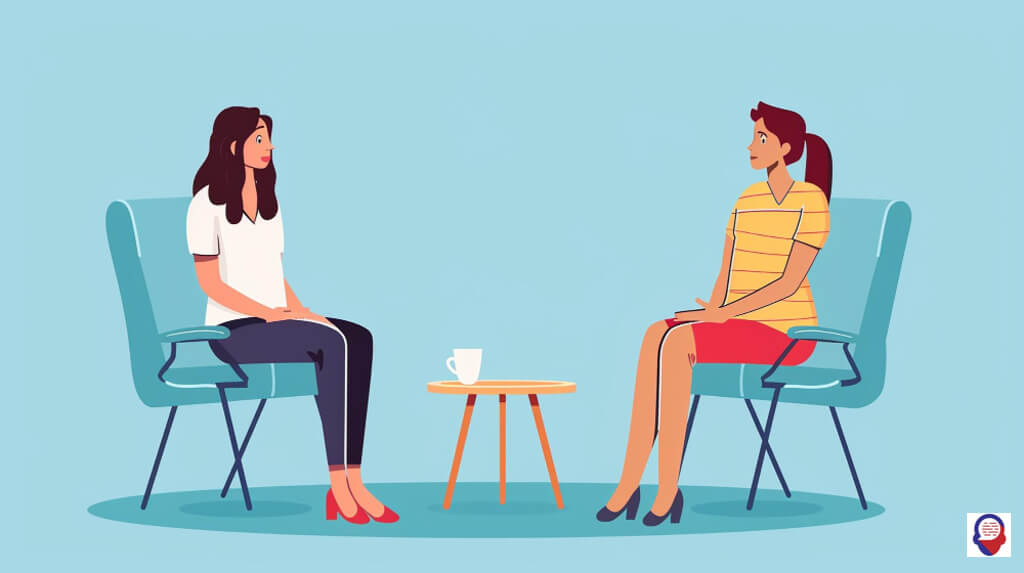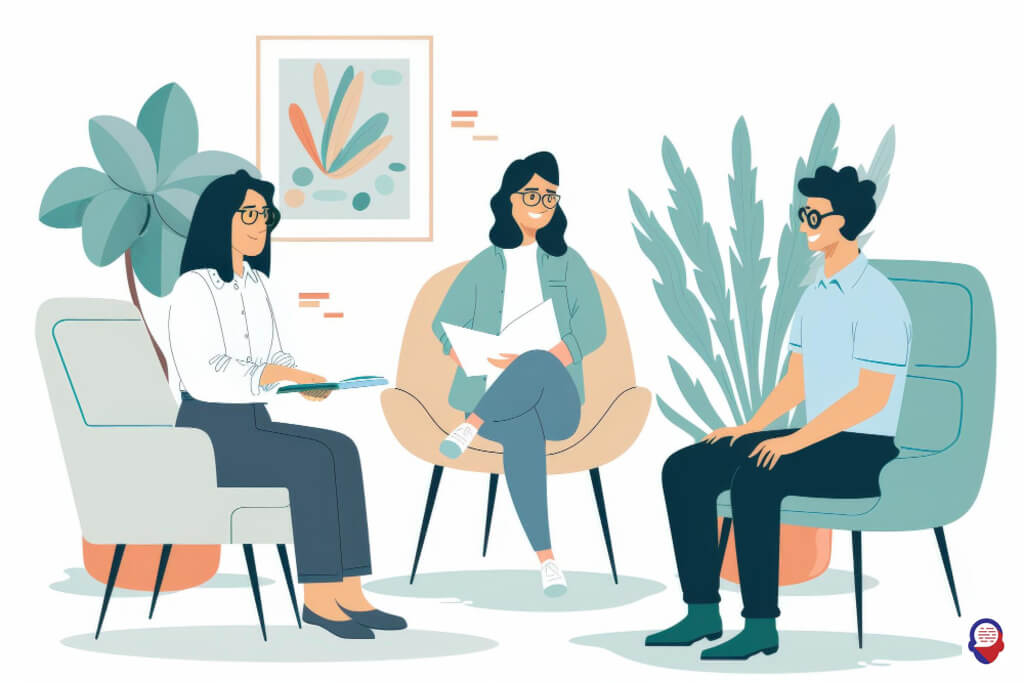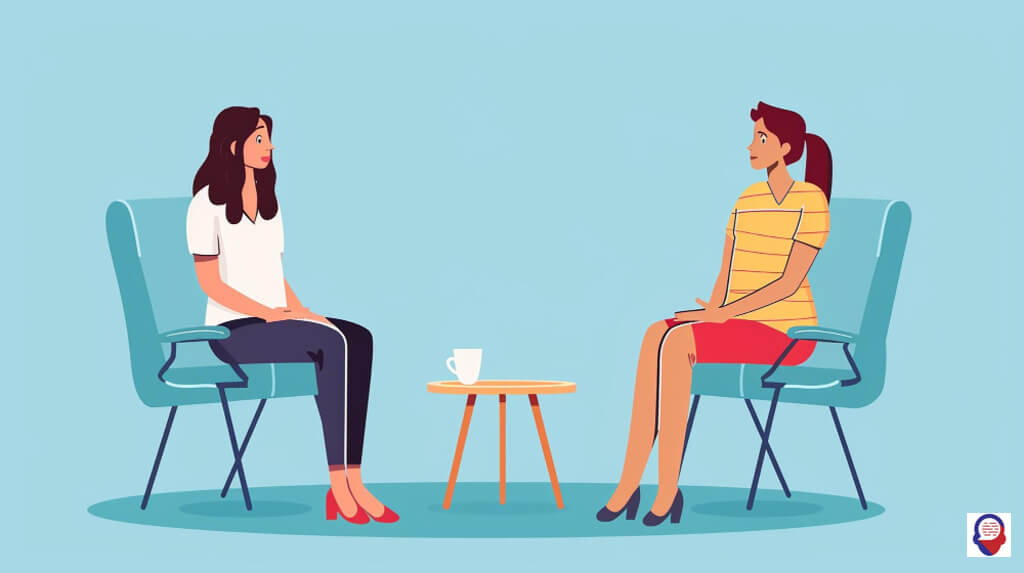Mastering Your Inner World: The DBT Guide to Emotions
Have you ever felt like your emotions were in the driver’s seat, and you were just along for a terrifying ride? One moment, you’re calm, and the next, a wave of anger, sadness, or anxiety crashes over you, leaving you feeling helpless and out of control. This experience is profoundly human. Yet, for many, the intensity and speed of these emotional shifts can make life feel like a constant, exhausting battle. You are not broken, and you are not alone. There is a powerful, evidence-based approach that provides a map and a toolkit for navigating this complex inner landscape. It’s called Dialectical Behaviour Therapy, or DBT, and it offers a revolutionary way to understand, accept, and ultimately manage your emotional world.
This guide will walk you through the core principles of how DBT approaches emotions. It’s not about suppressing what you feel or pretending you’re a robot. It’s about learning the skills to ride the emotional waves instead of being swept away by them. It’s about building a life where you are the one in control, able to experience the full spectrum of your feelings without them derailing your goals, your relationships, and your peace of mind. Prepare to learn not just what your emotions are, but what they are trying to tell you, and how you can respond with wisdom and skill.

What is Dialectical Behaviour Therapy (DBT)?
Dialectical Behaviour Therapy is a comprehensive, evidence-based type of psychotherapy designed to help people build a life they experience as worth living. It combines strategies from cognitive-behavioural therapy with concepts of mindfulness and acceptance, teaching practical skills to manage intense emotions, handle distress, and improve relationships.

Where did DBT come from?
DBT was developed in the late 1980s by Dr. Marsha Linehan, a psychologist who was working with individuals who were chronically suicidal and had been diagnosed with borderline personality disorder (BPD). Dr. Linehan found that traditional cognitive-behavioural approaches, which focus heavily on change, were often invalidating for these clients. They felt criticized and misunderstood, which made their problems worse.
In response, she integrated practices of acceptance and validation, drawn from Zen philosophy, with the change-oriented strategies of CBT. This created a new therapy that balanced the two seemingly opposite needs: the need to accept oneself completely as one is in this moment, and the need to change behaviours that are causing suffering. This dual approach proved to be remarkably effective, and its applications have since expanded far beyond its original scope.

What does ‘dialectical’ actually mean?
The term ‘dialectical’ refers to the process of synthesising two opposites. In DBT, the core dialectic is acceptance and change. This means holding two ideas that seem contradictory at the same time: "I accept myself and my life exactly as they are right now," and "I am motivated and working to change my life for the better."
This concept is revolutionary because it moves away from black-and-white thinking. Life is rarely all good or all bad, and you are not either perfect or a failure. The dialectical worldview acknowledges that reality is complex, messy, and full of contradictions. By learning to embrace this, you can reduce the internal conflict that comes from judging yourself for your struggles while simultaneously striving for improvement. It’s about finding the middle path, the synthesis that holds the truth of both sides.

Who is DBT for?
While DBT was originally created for individuals with BPD and chronic suicidal ideation, its effectiveness has led to its adaptation for a much wider audience. Today, DBT is successfully used to help people struggling with a vast range of issues related to emotional dysregulation.
This includes individuals with mood disorders, anxiety disorders, post-traumatic stress disorder (PTSD), substance use disorders, and eating disorders. More broadly, anyone who finds their emotions to be overwhelming, confusing, or a source of significant distress in their life can benefit from learning DBT skills. It provides a concrete, skills-based framework for anyone who wants to feel more in control of their emotional life, improve their coping mechanisms, and build more stable, fulfilling relationships.

How does DBT view emotions?
DBT views emotions as a natural, essential part of the human experience that should not be judged or suppressed. They are seen as automatic biological responses to our internal and external environments, providing us with vital information and motivation to act.

Are emotions good or bad in DBT?
In the framework of DBT, emotions are not categorized as "good" or "bad." They are simply seen as valid responses that arise for a reason. Labeling an emotion like anger or sadness as "bad" often leads to secondary emotions, such as shame or guilt for feeling that way in the first place. This only intensifies the suffering.
DBT teaches that all emotions, even the most painful ones, serve a purpose. They might signal that a boundary has been crossed, that something important has been lost, or that a situation is unsafe. The goal is not to eliminate painful emotions but to learn how to understand their messages, experience them without being overwhelmed, and choose how to respond effectively, rather than reacting impulsively based on the feeling alone.

What is the ‘Model of Emotions’ in DBT?
DBT uses a specific model to help you understand exactly how an emotion happens, breaking it down into a sequence of events. This demystifies the process and gives you clear points where you can intervene to change your emotional experience. It teaches that an emotion isn’t just one big, monolithic feeling that appears from nowhere.
The model starts with a "prompting event," which is the trigger in your environment or in your mind. This is followed by your "interpretation" of that event. Your interpretation then leads to "biological changes" in your body, like a racing heart or tense muscles. These changes create an "action urge," the impulse to do something, like yell or hide. Finally, this can lead to an "expression," which is how you show the emotion on your face or in your body language and words. Understanding this chain reaction is the first step to changing it.

Why do my emotions feel so overwhelming?
DBT explains that feeling overwhelmed by emotions often stems from a combination of high emotional vulnerability and a deficit in the skills needed to manage those feelings. Emotional vulnerability isn’t a character flaw, it’s a biological temperament. It means you might be more sensitive to emotional triggers, experience emotions more intensely than others, and take a longer time to return to your emotional baseline.
When this biological sensitivity is combined with an environment that didn’t teach you how to label, understand, and regulate your feelings, it creates a perfect storm. You experience intense emotions without the tools to navigate them. This leads to a cycle where the intense feeling triggers desperate or impulsive behaviours to escape the pain, which often create more problems, leading to even more intense emotions like shame or guilt. DBT directly targets this cycle by providing the missing skills for emotion modulation.

What are the core DBT skills for managing emotions?
The core DBT skills for managing emotions are divided into four key modules: Mindfulness, Distress Tolerance, Emotion Regulation, and Interpersonal Effectiveness. Each module provides a specific set of tools designed to target different aspects of emotional suffering, working together to build a comprehensive system for emotional wellbeing.

What is Mindfulness in DBT?
Mindfulness is the foundational skill of DBT, teaching you how to pay attention to the present moment without judgment. It involves learning to observe your thoughts, feelings, and sensations as they come and go, rather than getting caught up in them or trying to push them away.
DBT breaks this down into two sets of skills. The "What" skills are Observe, Describe, and Participate. This means noticing your inner and outer world, putting words to what you notice, and throwing yourself fully into the current activity. The "How" skills guide this process: doing it Non-judgmentally, One-mindfully (focusing on one thing at a time), and Effectively (doing what works to meet your goals). Central to mindfulness is finding your "Wise Mind," the intuitive place that synthesizes your emotional mind and your logical, reasonable mind.

How does Distress Tolerance help with intense emotions?
Distress Tolerance skills are for surviving crisis situations without making things worse. These are the skills you use when you are overwhelmed by a painful emotion that you cannot change or solve in the moment. The goal is not to feel good, but to get through the crisis without resorting to impulsive or destructive behaviours.
One powerful set of skills is called TIPP, which changes your body chemistry to bring down extreme emotional arousal quickly. It involves changing your Temperature with cold water, engaging in Intense exercise, using Paced breathing, and Paired muscle relaxation. Other skills involve distracting yourself with healthy activities (ACCEPTS), self-soothing through your five senses, and improving the moment (IMPROVE). These techniques provide a crucial emergency toolkit for when your emotions are at their peak intensity.

What is Emotion Regulation?
While Distress Tolerance is for surviving a crisis, Emotion Regulation skills are the long-term strategies for reducing your emotional vulnerability and changing unwanted emotions. These skills help you build a more stable and balanced emotional life over time. This module is about proactively managing your feelings, not just reacting to them.
Key skills include "Checking the Facts" to see if your emotional reaction actually fits the reality of the situation. Another powerful skill is "Opposite Action," which involves acting opposite to your emotional urge when the emotion is unjustified or unhelpful. For example, when you feel irrational fear, you approach instead of avoid. You also learn "Problem Solving" for times when your emotion is justified because it’s signaling a real problem in your life that needs to be addressed.

How does Interpersonal Effectiveness fit in?
Interpersonal Effectiveness skills are a crucial part of managing emotions because our relationships are often a major source of both joy and emotional pain. This module teaches you how to interact with others in a way that is effective, maintains your self-respect, and preserves the relationship. When you can communicate your needs clearly and set boundaries respectfully, you can prevent many of the conflicts that lead to emotional distress.
These skills help you navigate difficult conversations, ask for what you want (using skills like DEAR MAN), and say no to requests (using skills like FAST). By improving your ability to manage interpersonal situations, you reduce the frequency of prompting events that trigger painful emotions like anger, guilt, shame, and sadness. It empowers you to build a supportive social environment, which is a key factor in long-term emotional wellbeing.

How can I start using DBT skills for my emotions today?
You can start using DBT skills for your emotions today by beginning with the foundational practice of observation and then learning one or two simple, high-impact skills for crisis moments and long-term patterns. The key is to start small and practice consistently, rather than trying to master everything at once.

What is the first step to regulating emotions?
The absolute first step is to practice observing and describing your emotions without judgment. This is a core mindfulness skill. Throughout your day, simply pause and ask yourself, "What am I feeling right now?" Try to notice the physical sensations in your body associated with the feeling. Is your chest tight? Are your shoulders tense?
Then, put a name to the emotion. Instead of just saying "I feel bad," try to be more specific. Do you feel disappointed, anxious, irritated, or lonely? The simple act of labeling your experience creates a small space between you and the emotion. It shifts you from being consumed by the feeling to being an observer of it. This practice, done repeatedly, builds emotional awareness, which is the necessary foundation for applying any other skill.

How can I handle an emotional crisis right now?
If you are in the middle of an intense emotional crisis and feel completely overwhelmed, the most accessible skill to use is TIPP. This set of Distress Tolerance skills is designed to rapidly change your body’s physiology, which in turn calms the intensity of the emotion. Find a way to change your body’s temperature, ideally by splashing your face with cold water or holding an ice pack. This triggers the "dive response," a natural reflex that slows your heart rate.
At the same time, focus on your breathing. Try Paced Breathing: breathe in slowly for a count of four, and breathe out even more slowly for a count of six. This activates your parasympathetic nervous system, which is your body’s natural relaxation response. These physical interventions can break the feedback loop of an escalating emotional crisis, giving you the mental space to think more clearly and avoid making the situation worse.

How can I change a long-term emotional pattern?
To change a long-term, recurring emotional pattern, like chronic anxiety or persistent feelings of shame, the skill of Opposite Action is incredibly powerful. First, Check the Facts to determine if the emotion and its intensity are truly justified by the current situation. If the emotion is not justified or is not effective for you in reaching your goals, you must act opposite to its urge.
If you feel an urge to hide because of social anxiety, Opposite Action means you gently approach a social situation. If you feel the urge to ruminate on a mistake because of shame, Opposite Action means you share your experience with a trusted friend or engage in an activity that makes you feel competent. Acting opposite sends a new message to your brain, challenging the old emotional pathway. It is difficult and counterintuitive, but with repeated practice, it can fundamentally rewire your habitual emotional responses over time.
Frequently Asked Questions

Is DBT only for people with a specific diagnosis?
No, DBT is no longer just for individuals with a specific diagnosis like Borderline Personality Disorder. While it was developed for that population, the skills it teaches are universally helpful for anyone who struggles with intense emotions, impulsive behaviours, or difficult relationships. Many people without any formal diagnosis find DBT skills invaluable for navigating stress and improving their overall quality of life.

Can I learn DBT skills on my own?
It is possible to learn the concepts and skills of DBT on my own through workbooks, books, and other resources. Many people have successfully integrated these skills into their lives through self-study. However, DBT is most effective when learned in its intended format, which includes individual therapy, a skills training group, and phone coaching with a trained DBT therapist. A group and therapist provide structure, accountability, and expert guidance that can be difficult to replicate alone, especially when tackling deeply ingrained patterns.

How long does it take for DBT skills to work?
The time it takes for DBT skills to work varies for each individual. Some skills, like the TIPP skills for crisis survival, can have an immediate effect on your physiology and emotional intensity in a single use. Other skills that target long-term patterns, like Opposite Action or building mindfulness, require consistent practice over weeks and months to create lasting change. The key is commitment and repetition. Like learning any new skill, from playing an instrument to learning a language, progress comes from dedicated and regular practice.

What’s the difference between DBT and CBT?
DBT is a type of Cognitive Behavioural Therapy (CBT), but with key differences. Traditional CBT focuses primarily on identifying and changing irrational thoughts and behaviours. DBT incorporates these change-based strategies but adds a crucial, balancing component of acceptance and mindfulness. The ‘dialectical’ part, the synthesis of acceptance and change, is the main distinction. DBT also has a stronger emphasis on managing extreme emotional states and a structured, modular approach to teaching specific life skills for mindfulness, distress tolerance, emotion regulation, and interpersonal effectiveness.

***
Your emotions are not your enemy. They are a fundamental part of you, offering wisdom, motivation, and colour to your life. But when they feel overwhelming, navigating them alone can seem impossible. You don’t have to.
At Counselling-uk, we believe that everyone deserves a safe, confidential, and professional space to understand their inner world and learn the skills to manage all of life’s challenges. Our dedicated therapists are here to guide you, offering support and expert advice as you build a life where you feel in control and at peace. If you’re ready to stop being controlled by your emotions and start building a life you truly value, reach out to us today. Your journey to emotional wellbeing starts with a single, courageous step. We are here to walk it with you.



